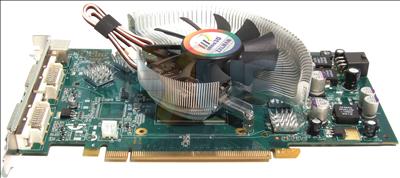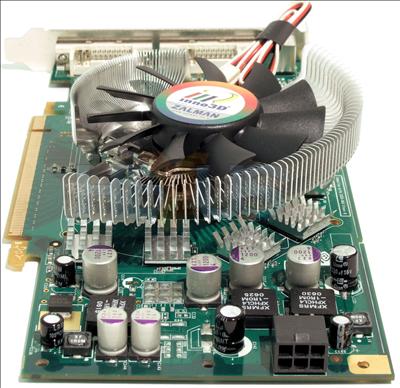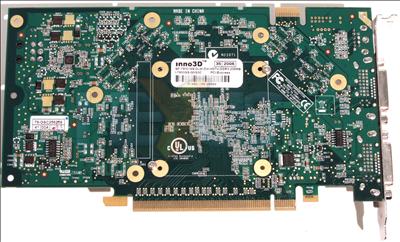Inno3D GeForce 7900 GS Zalman Edition 256MiB
Let's get the first couple of questions out of the way: what is GeForce 7900 GS and how does it fit into NVIDIA's current GPU hierarchy?
The common approach for GPU designers is to architect a series with the range-topping model carrying all the bells and whistles. For NVIDIA's GeForce 7-series, this is G71, or GeForce 7900 GTX (GeForce 7950 GX2 notwithstanding). G71's 7900 GTX carries a non-unified design approach that teams 8 vertex shaders and 24 fragment processors, with GDDR3 memory running via a 256-bit bus. GeForce 7950 GT is cast in the same architectural mould and adds in HDCP support as standard. However, it runs at lower frequencies of 550MHz core and 1400Hz RAM for the reference design. We've reviewed a number of retail models from the likes of XFX and Inno3D and Foxconn. Currently priced at around £200, GeForce 7950 GT is a decent proposition that's up against Radeon X1900 XT 256MiB from ATI.
GeForce 7900 GS is 7950 GT's cheaper cousin, featuring 7 and 20 vertex and fragment processors, respectively, down from the 8/24 setup on the GT part. Reference frequencies are reduced to 450/1320, so it's a bit less of everything, really. The good news is that retail models are priced between £115-£150 depending, of course, upon specification, so 7900 GS is competing against ATI's Radeon X1950 Pro, which we took a look at here. From pure architectural terms, you get a lot from a starting point of not much more than £100.
With that out of the way, let's take a closer look at Inno3D's GeForce 7900 GS Zalman Edition 256MB card.
Inno3D lists a regular GeForce 7900 GS which follows the reference design to the letter along with this model, featuring an all-aluminium Zalman cooler. The fan needs to be connected to an external 3-pin motherboard header, so speed regulation isn't directly dependent upon the GPU temperature.
A side-on look shows the cooler overhanging the heatsink-clad GDDR3 memory chips that make up the card's 256MiB framebuffer. The cooler's larger size dictates that it will take up a slot adjacent to the x16 PCIe's, so, as normal, ensure that your chassis has room for it.
Inno3D keeps this model at 7900 GS default frequencies of 450/1320. Surely with such care applied to cooling some pre-overclocking would have been nice?
The fan blows through the heatsink's fins and over the memory chips, which is good. With an ambient temperature of 19.5C and the card situated on an open-air testbed, the GPU idled at 40C and rose to 55C under load, with the fan connected to a PSU header and running at around 1,000RPM. That's over 10C better than the reference design. The concurrent RAM cooling ensured the chips' heatsinks barely became warm.
GeForce 7900 GS is still a thirsty GPU. NVIDIA's used a 6-pin connector for extra juice above and beyond the 75W or so the x16 PCIe slot provides.
It's up to individual partners to implement HDCP support. Inno3D hasn't, but both DVI connectors are dual-link, which seems to be the norm now.














